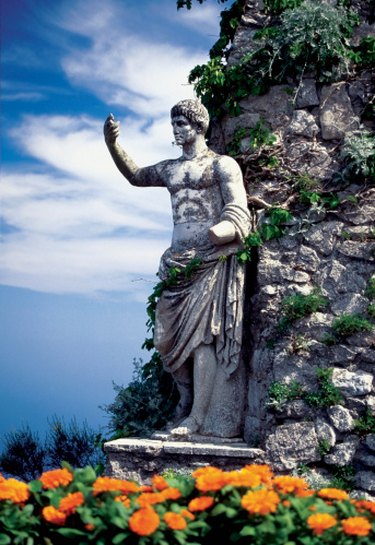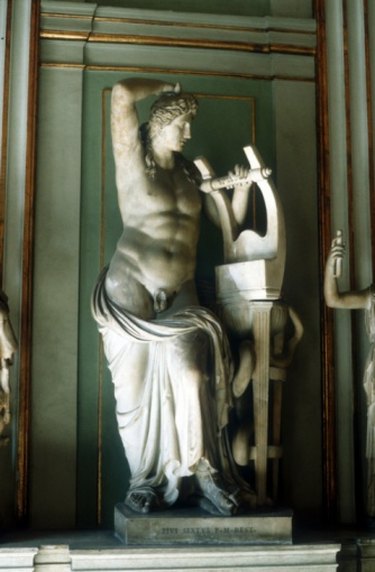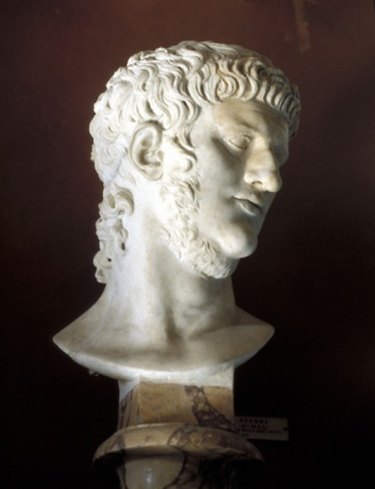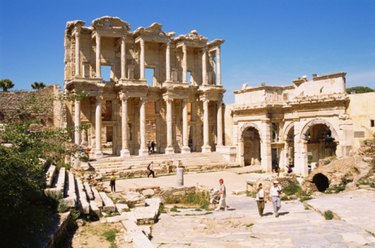
The term "classical art" refers to the art of the ancient Greeks and Romans, and some of the most familiar pieces of classical art are Greek and Roman sculpture. Although these two cultures are often associated with each other in the Western mind, some distinct differences characterize the ways that each created its sculpture.
Choice of Material
Video of the Day

Although Greek sculptures are associated with white marble, Greek sculpture in the early classical period were often made in bronze During the high classical period and after, sculptures were made from white marble and were often painted. Roman sculptors also used primarily white marble, though they did not paint their sculptures as Greeks did.
Video of the Day
Choice of Subject

Greek sculpture throughout the classical period consisted primarily of depictions of Gods and mythological scenes and figures. These figures are often sculpted as "heroic nudes," in which the male figure is idealized.
Although Roman sculpture, which feature many copies of Greek sculptures, is also concerned with mythology, Romans often featured emperors and naturalistic examples of upper-class individuals.
Free-standing Sculptures

In free-standing sculptures, the Greeks depicted Gods, heroes and mythological figures. With this focus on "extra-human" subject matter, Greeks created idealized versions of the human body. Figures in Greek sculpture are often detached and unemotional, even when performing difficult or painful tasks. The images of people in Greek sculpture echo the focus on reason, moderation and symmetry in Greek culture.
The Romans took many elements from Greek art but brought a more naturalistic and ostentatious style. Where Greek statues and sculptures depict calm, ideal figures in the nude, Roman sculpture is highly decorative and more concerned with realistic depictions of individuals.
Architectural Sculpture

The Greeks not only had free-standing sculptures, but also sculpture worked into architecture, primarily in friezes that ran in horizontal strips above architectural columns. These architectural sculptures also depicted Gods and mythological figures and were often featured above temples.
Like the Greeks, Romans incorporated figurative sculpture into their architecture, but as with free-standing architecture, their figures often depicted leaders and historical events. For example, a major Roman frieze depicts the victories of emperor Trajan, while the frieze at the Temple of Zeus in Greece depicts men, women and mythological creatures such as centaurs.